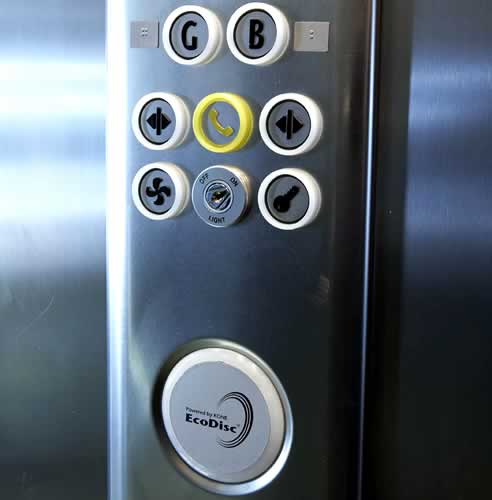We often don’t think about all the ways in which our lifestyles use a lot of energy. Many of us for instance live in big cities, and work in tall buildings. It is fine to take the steps if you are going up 4 or 5 flights of stairs, but what if you live/work on the 55th or 60th floor? Things like elevators have become an every day, and energy hungry, way of life. Elevators run constantly, hauling us and our stuff up and down all day and all night. If there was a way to make them use less energy it would help reduce bills, lessen global warming gas production, and in general make building owners a lot happier.
KONE the Finish elevator company, will release a range of elevator offerings during 2009 which will reduce energy consumption by 30%, compared to its current volume models, with a target of 50% energy consumption cutback in its elevator offering by the year 2010.
The next generation of KONE machine-room-less elevators to be launched in 2009 will combine new regenerative solutions with impressive stand-by energy saving capabilities. Additional energy-efficient features such as LED lights in the elevator cabins are also improvements which will allow a total reduction of 30% in energy consumption.
“Buildings account for approximately 40% of the world’s energy needs and elevators can account for up to 10% of a building’s energy consumption,†says Jussi Oijala, SVP, KONE Technology. “Based on this, we see great potential to further reduce the impact of buildings on the environment by offering innovative and energy-efficient solutions to the market.â€
KONE has been developing innovative solutions to improve the movement of people in buildings worldwide while decreasing its impact on the environment. Since its commercial launch in 1996, the KONE EcoDisc® hoisting machine has cumulatively saved the electricity production equivalent of a typical power plant. This figure represents avoiding the consumption of 2,000,000 barrels of oil, or the emissions of 100,000 cars driving the earth’s circumference.
KONE placed environmental issues high on its corporate agenda when launching its new development programs, one of which was environmental excellence, in early 2008. Key actions include initiatives to manage carbon emissions from its operations, schemes to develop innovative and eco-efficient People Flowâ„¢ solutions to save energy in urban developments, as well as actions to ensure its suppliers fulfill certain eco-efficiency requirements.
Obviously the most eco-friendly way to get up to the 5th floor is to take the stairs, but this is a good start on making the backup option a little easier on the planet.
